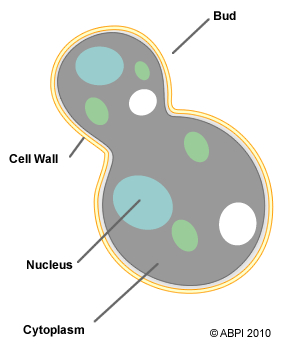This topic takes on average 55 minutes to read.
There are a number of interactive features in this resource:
 Biology
Biology
 Chemistry
Chemistry
Fungi are called microorganisms, but some can easily be seen with the naked eye. Mushrooms, toadstools and bread mould are all types of fungi. Individual fungus cells have a nucleus, cell wall and structures like mitochondria can be seen in their cytoplasm. Mushrooms and toadstools are fungal organisms that contain multiple cells, though some fungi and unicellular, such as yeast.
Yeast is a type of single celled fungus which we use to make bread and beer. Yeasts can also cause disease. Yeast cells are smaller than plant and animal cells. They are around 0.01mm in diameter. They reproduce asexually by budding. There are different types of yeast but their cells all have some components in common:
